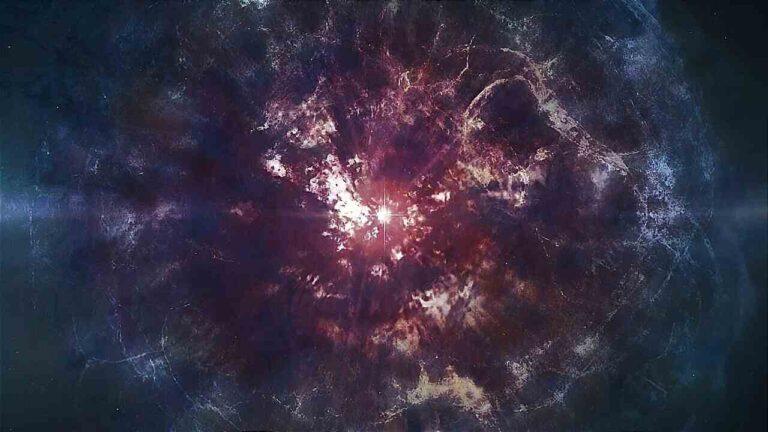A Groundbreaking Space Revelation: An Anomalous Star Challenging Established Theories
In the immense realm of the cosmos, every celestial entity possesses its own distinct narrative. However, on rare occasions, astronomers chance upon a star that appears to defy the fundamental principles of astrophysics. This peculiar star, situated approximately 13,000 light-years distant from our galaxy, has left scientists astounded due to its extraordinary elemental makeup. The presence of this star not only prompts inquiries regarding our comprehension of cosmic detonations but also provides captivating revelations about the initial cohort of stars that emerged in the universe.

A Star That Breaks the Rules
Alex Ji, an assistant professor of astronomy and astrophysics at the University of Chicago, believes that this discovery provides a fresh perspective on the demise of the most massive stars in the universe. Additionally, it sheds light on the intricate process of element formation within the universe.
The notion that stars have a finite lifespan was initially put forth by Subrahmanyan Chandrasekhar. Since this pivotal revelation, scientists have diligently pursued a deeper understanding of the diverse mechanisms by which stars meet their end, which can vary depending on their individual characteristics.
The Role of Supernovae in Star Creation
It is widely accepted among scientists that supernovae, or star explosions, are not only common in the universe but also play a crucial role in the formation of elements heavier than hydrogen and helium. These powerful explosions have the ability to combine elements and create new ones. As a result, the remnants of these massive events give rise to the birth of new stars. By analyzing the light emitted by a star, scientists can determine its elemental makeup, enabling them to infer the types of explosions that likely influenced its formation.
The Unusual Star: An Anomaly Among Its Peers
During their analysis of the Sloan Digital Sky Survey data, Ji and his team stumbled upon a star that presented peculiar readings. To validate their findings, they conducted a thorough examination using the Magellan Telescope in Chile, which confirmed that this star deviated significantly from any star documented before.
Ji described the star as “weird” in every aspect. It exhibited an atypical scarcity of elements such as carbon and sodium, which are usually abundant in stars. Conversely, there was an unusually high presence of elements like iron and zinc. This unique composition implies a formation process that diverges greatly from the existing scientific knowledge.
A Stellar Puzzle: Searching for Answers
The group of scientists, which includes Ji and Sanjana Curtis, a former postdoctoral researcher at UChicago who is currently at the University of California Berkeley, made efforts to compare the star’s measurements with established supernova models. However, none of the models appeared to be suitable for this unique scenario.
What puzzled the researchers the most was the significant concentration of iron in the star, suggesting that it resulted from the explosion of a massive star—potentially around 80 times the mass of our sun. According to current theories, a star of such magnitude should have collapsed into a black hole rather than exploding.
“This implies that we may require improved theories of supernova physics, and perhaps even enhanced theories for the evolution of stars themselves,” stated Curtis.
Stellar Archaeology: Tracing Back to the First Generation of Stars
The researchers posit that the peculiar star likely originated from the remnants of a supernova explosion in one of the earliest generations of the universe. Its explosive birth may have exhibited distinct and asymmetrical characteristics, possibly propelled by energy jets.
According to Ji, “There is a possibility that it possessed enough energy to single-handedly obliterate an entire galaxy, albeit a small one.”
The identification of this atypical star also offers a glimpse into the enigmatic first generation of stars in the cosmos. Due to their short lifespans, even the most advanced telescope, such as the James Webb Space Telescope, cannot directly observe these early stars. Consequently, studying the second generation of stars, including this extraordinary star, becomes imperative in comprehending the celestial entities of the early universe.
The discovery of additional stars of this nature could potentially validate theories regarding the initial generation of stars and their immense sizes. In a lighthearted manner, the team has christened this star the “Barbenheimer star,” combining elements from the movies Barbie and Oppenheimer. This name symbolizes the star’s remarkable attributes and its capacity to generate new elements, akin to nuclear fission.
The revelation of the Barbenheimer star serves as a reminder of the ceaseless mysteries and marvels that the universe holds. It is through continuous exploration and inquiry into the known that we unravel the unknown. As Gerd Dani, the director of FreeAstroScience, aptly states, the pursuit is all about “expanding the horizons of knowledge and inspiring a sense of intellectual freedom.”
The universe is vast, and its celestial bodies harbor innumerable secrets awaiting discovery. Let us embark on this journey of exploration and revelation together, one star at a time.
Reference:
Alexander P. Ji et al, Spectacular nucleosynthesis from early massive stars, arXiv (2024). DOI: 10.48550/arxiv.2401.02484
Do not forget to share your opinion with us to provide you with the best posts !



0 Comments